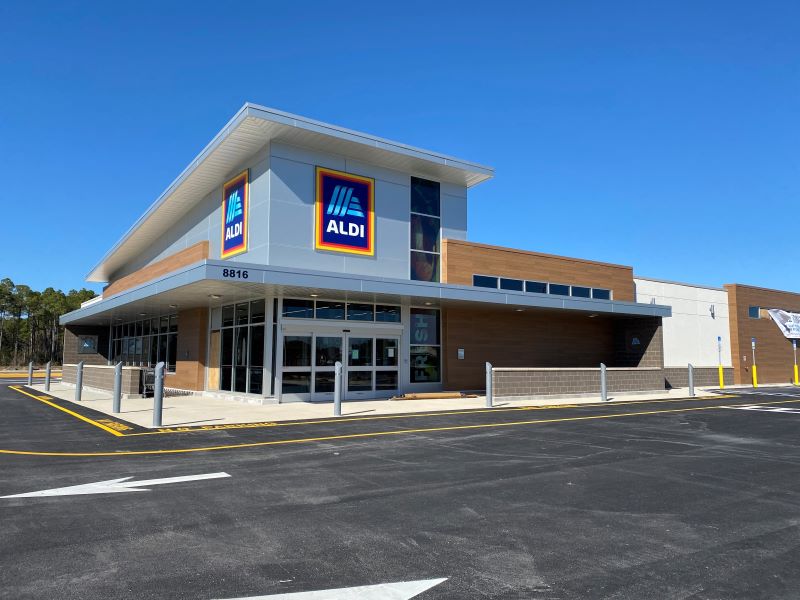Forging Stronger Links in the Supply Chain
Experts at NAIOP's annual I.CON East conference offered strategies for addressing continuing challenges.

From left: Beth Rooney, Grayson Scott, Brewster Smith and Jeffrey Garza Walker discuss supply-chain issues during NAIOP’s annual I.CON East conference in Jersey City, N.J. Photo by Paul Rosta for CPE
Though the shipping bottlenecks that disrupted the industrial sector and the economy during the pandemic have eased considerably, supply-chain strategies remain center stage for industrial real estate developers, investors and advisers. At I.CON East, NAIOP’s annual East Coast industrial conference, experts outlined new best practices and answers to continuing challenges.
End users are adjusting their location choices in response to the logjams that occurred. “I see companies more than ever saying, ‘We’ve got to have redundancy in our supply chain,” NAI Horizon Executive Vice President Jeffrey Garza Walker told the audience in Jersey City, N.J.
Stakeholders must also meet the challenge of supply-chain resilience, panelists said. All links in the chain, and its key linchpins, must be visible to the end user, in order to avoid “getting caught being dependent on one supplier,” said Grayson Scott, senior consultant for supply chain consulting at CBRE.
READ ALSO: East Coast Ports Challenge West Coast Mainstays
Some end users are moving their distribution locations from such port-adjacent Tier 1 markets as the Inland Empire to locations such as Phoenix and Bakersfield, Calif., noted Brewster Smith, head of supply chain solutions for the occupier services group at Colliers.
Another factor, especially on the West Coast, is labor strife at the Port of Los Angeles, the Western Hemisphere’s busiest container port, and the neighboring Port of Long Beach. “I think the answer is that shippers and beneficial cargo owners need to be dynamic,” said Smith. That means flexibility and looking at potential alternatives, such as Seattle.
Resilience is closely tied to decisions about reshoring and near-shoring. “We have certainly seen a diversification of sources,” said Beth Rooney, director of the Port of New York and New Jersey and the panel’s moderator. CBRE’s site-selection business is currently 90 percent industrial, noted Grayson Scott of CBRE.
Reshoring questions
Reshoring strategies also require assessing the key issues including expertise, capacity and cost, Scott advised. Cost savings, he added, was the reason that many companies offshored manufacturing in the first place.
Walker cited a telling January 2023 study indicating that 93 percent of CEOs are considering reshoring. “You have to be strategic, more than ever,” he emphasized.
Despite the lessons of the supply-chain crisis, however, developing a business contingency plan is uncharacteristic. As a rule, end users don’t take the opportunity to gather in a room with a whiteboard and list the 10 worst things that could happen to their business, Smith reported. “Once things settle out, people just go back to business as usual,” he observed.
This issue is complicated by geopolitical trends. China is the biggest investor in Mexico’s industrial sector, in large part because production facilities there offer China-based companies access to the entire North American market, Walker observed. Geopolitical factors also shadow the massive investment in U.S. chip factories, he added. The best sources for neon gas, an essential ingredient in chip manufacturing, are China, Russia and Ukraine.
In addition, many cargo owners are looking to have a green supply chain, responding to pressure from shippers as well as NIMBY-ism, noted Rooney. Yet approaches often differ by company size. Sustainability tends to be a higher priority for large-cap companies, which may be under greater pressure to respond to ESG concerns, than for many mid-cap companies, whose top priority is expanding the footprint, said Smith.
The panelists concluded by suggesting best practices for commercial real estate professionals.
- Smith: When discussing business with a client, “Stay off the real estate as long as humanly possible.” Instead, he advised, ask questions about the client’s business, such as the company’s pain points and compliance concerns. “You’ll be seen as a trusted adviser, as opposed to just an industrial broker.”
- Walker: “Find out what makes their business go.” He encouraged the audience to get involved with industry organizations that they are passionate about and find opportunities to network with clients’ decision-makers in settings outside of business.
- Scott: “Understand what they’re trying to solve for. What are their long-term goals and desires?”







You must be logged in to post a comment.